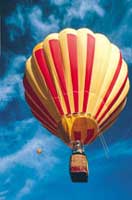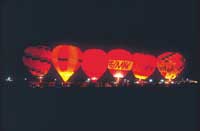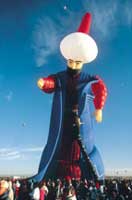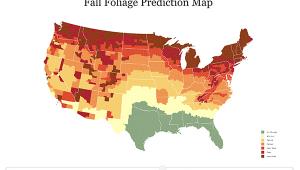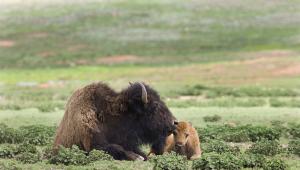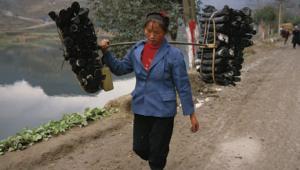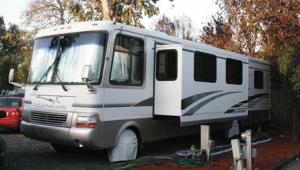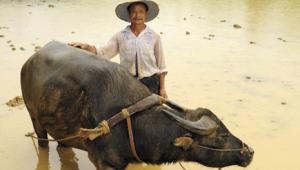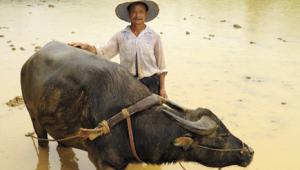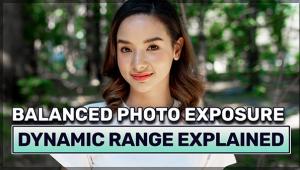The In & Out Advantage
How And Why A Travel Shooter Zooms Around
I'm a zoom lens man. I use zooms in virtually all my travel work, making exceptions when I need a macro or super telephoto shot. This was not always the case. Back in '75, when I first started taking pictures seriously, I only used fixed focal length lenses. Why? Because the zoom lenses of yesteryear simply did not produce the same high quality images as fixed lenses of the same era. Common characteristics of early zooms included slightly soft images, vignetting, and lens flare. Today's zooms are a photographer's dream come true. Advancements
in computer-aided lens design make it hard to tell the difference between
a picture taken with a fixed lens and a zoom lens. New zooms are that
sharp. Vignetting has also been all but eliminated in new zoom lenses. |
|||
In addition,
we have "super cool" (my designation) wide angle zooms; most
camera and independent lens manufacturers offer a 17-35mm zoom or a 20-35mm
zoom. The popularity of these lenses has even surprised the manufacturers.
And...how about Canon's image stabilization lenses (75-300mm IS, 100-400mm IS, and 28-135mm IS)? Okay, so technology is cool, giving us new tools to work with and toys to play with. (Sorry Sister Jerome, I remember you told me never to end a sentence with a preposition; bad English. Please forgive me.) What do all these technological advancements mean to you and me? Well, it gives us several good reasons for shooting with zoom lenses. Take a look. |
|||
Creative Composition. When people ask me what's the most important part of taking a picture, I usually answer: "Why...having a camera, of course." After I get a chuckle, I go on to say that composition is critical. Zoom lenses make it easy for photographers (myself included) to think about composition, and to be more creative. While I'm looking at a scene in my camera's viewfinder, I zoom-in and out and see how I can improve the scene by eliminating distracting elements, or by including more of the surrounding area. Many times, I take a tight shot and a wider shot, which gives me the opportunity to choose the best picture at home. Convenience And Compactness. I like to travel light. Actually, I like to travel as light as possible. That's why I like to shoot with zoom lenses. |
|||
When I go on location, my standard
shooting gear (stuff I always have with me) includes a 17-35mm zoom, a
28-135mm zoom, a 75-200mm zoom, and a 100-400mm zoom. As I mentioned earlier,
I have a macro lens and super telephoto lens available; I also have fixed
focal length lenses as back-ups. But all this stuff usually stays in the
car, safari vehicle, lodge, hotel, or tent until I need it. Speed. When I talk about the speed of zoom lenses, I'm not talking about a lens' maximum aperture (more on apertures in the next paragraph). I'm talking about the speed at which I can pick up a lens, compose my shot, and shoot. To illustrate my point, say you were taking street scenes. With a 17-35mm zoom you can fine-tune your people shots in a few seconds. If you had to switch between two or three lenses--a 20mm, 24mm, and a 35mm--you'd probably miss the shot...or at the very least make your subject a bit more self-conscious while he/she was waiting to be photographed. |
|||
So what about those maximum apertures? Well, fast lenses, that is, lenses with relatively wide apertures (f/2.8-f/3.5) have two main advantages over slower lenses: they produce a brighter image in your viewfinder and they let you shoot at a faster shutter speed to stop action. Cool. But some shooters would say big deal. Why? Because today's ISO 400 and 800 films (as well as slower films that can be "pushed" to those speeds) produce damn good images. So, to some photographers, having the fastest possible (and most expensive) zoom is a moot point; they would rather get the slightly slower lens and have some bucks left over for film and travel. Enjoyment. In discussing
zoom lenses, I can't overlook how much fun they are to use. After
all, we are into photography to have fun. Right? Well, zoom lenses add
to the enjoyment of photography by making us feel more creative. |
|||
Choosing A Zoom Which zoom lens is best for
you? Here are some things to consider: |
- Log in or register to post comments
